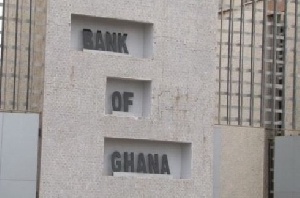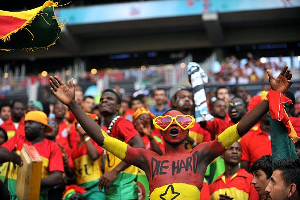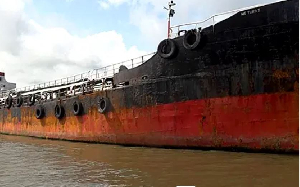The Institute for Fiscal Studies (IFS) has said the new central bank governor, Dr. Ernest Addison, must ensure the issue of high non-performing loans within the banking industry is dealt with adequately, lest ongoing plans to capitalise the banks will face severe constraints.
Although the non-performing loans ratio recorded in February this year stood at 17.7 percent, a marginal decline from 18 percent recorded in January 2017, the situation has worsened in comparison to the February 2016 performance of 15.6 percent.
If the high NPL issue is not addressed, it would be very difficult for the central bank to ask banks to meet the yet to be announced substantial increase in the stated minimum capital, Dr. Said Boakye, a Senior Research Fellow at the economic policy think tank, told the B&FT.
“The rising non-performing loans ratio represents a threat to banks’ capitalisation which the central bank is working to increase,” he said.
The central bank has given indication it will increase the minimum capital from the current rate of GH¢120 million to a yet to be announced figure.
Although some bankers have raised concerned about the need to protect the relatively small local banks, the banking industry has shown it is generally in favour of the increase.
The Managing Director of CAL Bank, Frank Adu Jnr, has proposed, for example, that minimum capital requirement should be increased to US$200million, to create larger banks that can undertake big-ticket transactions.
“I think this economy need banks that should have a minimum of US$200million. Let us get real. Don’t you think that we need the financial muscle to do the business of this country? Do you think government should continue being responsible for the building of harbours and airports, interchanges and others?” he asked in an interview with the B&FT.
The banks have been badly exposed to the so-called “legacy debt” in the country’s energy sector, even though government has started making payments in bits, from the energy levies.
The government has said it will issue a 15-year bond to settle the debt, estimated to be about US$2.4billion, and use the energy levies to service the bond as it trickles in.
The central bank, in its March 2017 Banking Stability report, noted that: “the high NPLs continue to pose upside risks to the banking industry, despite the marginal decline in the energy-sector related debt exposures.”
The increase in the NPL ratio over the one year period, the central bank said, was partly due to the downgrade of some loans by banks after its 2016 Asset Quality Review (AQR), with no commensurate increase in gross advances.
But the central bank is hopeful the industry’s NPL ratio will improve, following the conclusion of restructuring arrangements for the industry’s exposure to the Bulk Oil Distribution Companies (BDCs).
“As government continues to pay down the energy-related State-Owned enterprises (SOEs) debts according to the agreed quarterly schedule, banks’ exposure to the energy sector will decline. This, together with additional efforts by banks to tighten credit risk management practices and intensify loan recovery efforts, particularly for large non-oil related exposures, could lead to further reduction in the NPL ratio.
The current minimum capital requirement of GH¢120million, the amount of capital commercial banks have to hold, has dropped in value as compared to the US dollar--from around US$60million in 2012 to under US$30million presently.
Whilst opinions differ on how much is good enough as stated minimum capital for banks, both the central bank and industry players agree that the current figure is inadequate.
Business News of Friday, 5 May 2017
Source: thebftonline.com













